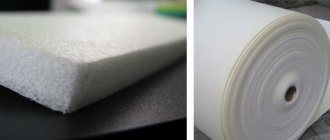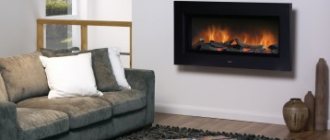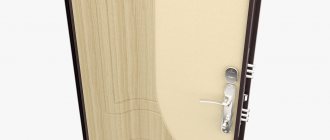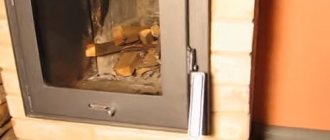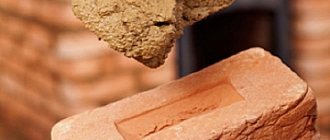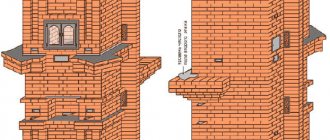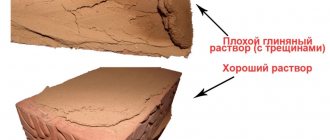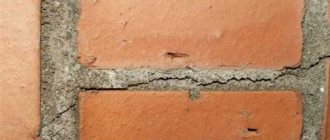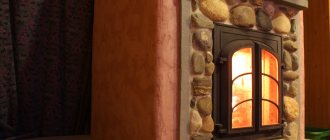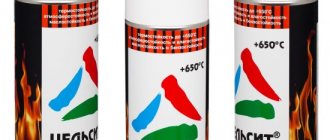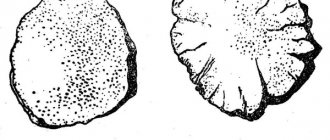What is the best material to build a stove from?
When it comes to material for building stoves, different options are usually discussed. Among the materials mentioned are metal, natural stone and brick. Each material deserves attention in its own way.
The metal is most often used to make lightweight, portable stoves. But at the same time, it is not always appropriate to install such stoves in residential premises, and the reason here is very banal - the heat from such a stove can only be obtained while combustion is maintained in the firebox. Of course, there are long-burning models, but such stoves are not capable of heating a truly large house.
Natural stone is mainly used to decorate a stove or fireplace. It is completely unsuitable for laying a firebox. Under the influence of high temperature, the stone heats up unevenly, causing it to collapse. In addition, natural stone is a very difficult material for construction - it is very difficult to build even the simplest stove out of stone.
Another thing is brick for laying stoves. The simple rectangular shape allows the construction of stoves of different designs and purposes. The presence of several varieties of this material makes it possible to create stoves with a high efficiency. You can even decorate a building artistically, giving it a special look, using different types of bricks. True, before starting construction, it is worth thoroughly understanding which brick is best to build the stove from.
Which brand of brick is best for a stove?
The brand of stove brick depends on its composition. Fireclay material is marked with the letter Ш and a digital index indicating heat resistance. Brick markings Ш-5 and Ш-8 are suitable for the stove.
Refractory bricks, which are of high quality and are especially popular among domestic buyers, are produced by several factories:
- Nikolskoye plant (NKZ).
Borovichi Refractory Plant.
The brick rating is topped by products produced by Russian factories. Foreign products are more expensive and are used for exclusive decorative finishing.
When choosing a masonry material, take into account the mason's recommendations. A specialist will be able to select the stone that is optimally suited in each specific case.
How much does a kiln brick cost?
Solid clay bricks are used for laying stoves. For different manufacturers, the price per unit varies from 40-60 rubles. for a unit. The cost of bricks for a stove per piece increases by an average of 20% if various additives have been added to the material to increase heat resistance and other characteristics.
Used bricks are allowed to be used in the masonry of stoves if they do not have cracks or visible mechanical damage. The cost is 30-50% lower, depending on the quality.
Figured brick is a separate category. The cost per unit varies from 120-150 rubles. You can find out the purchase costs if you first calculate the number of bricks for the stove. An experienced master makes calculations with an error of no more than 1-2%.
Kiln brick cutting
The size of a standard red brick for a stove is 120*250*65 mm. Deviations in width and length of 5 mm are allowed, up or down. You will definitely need to adjust the material to size.
It is better to saw on a specialized machine with a water cooling supply. The cut area is clean, without chips or gouges.
There are several other ways to solve the cutting problem:
- Processing brick with a grinder - the cut is made using a diamond disc. During cutting, a large amount of dust is produced, which must be taken into account if the work is carried out inside the house.
Grinding of the cut will definitely be required. For this purpose, special attachments are provided for a drill or grinder. After processing, a perfectly smooth surface remains.
Is it necessary to soak the brick before laying the stove?
Craftsmen who have been making brickwork for decades used to soak stones for several hours. Now, the characteristics of red brick and masonry mixture have changed significantly. Accordingly, the approach to masonry has changed.
Whether or not to soak the stone depends on several factors:
- Type of mortar - when laying on clay, you can soak the brick for a few minutes. If you plan to use a special masonry mortar, there is no need for preliminary preparation of the stone.
How to wash bricks after laying a stove
Even after carefully laying the stove, mortar will remain on the walls and efflorescence will appear. There are several ways to clean the surface:
Special cleaning products are sold in any construction supermarket. Remove any contaminants from the surface. The composition does not contain abrasive substances. Cleaning products are the best option if you need to clean the facing bricks on the clay masonry of the stove.
When cleaning, do not use abrasive cleaning compounds or sandpaper. During laying, it is necessary to immediately remove all sagging and mortar that has fallen on the surface. Accuracy is the key to high-quality stove masonry.
What properties should a brick used for laying a stove have?
Kiln bricks must meet the following technical requirements:
- Resistant to high temperatures and open flames.
- The ability to accumulate heat and retain it for a long time.
- Sufficient mechanical strength.
- Resistant to significant temperature fluctuations.
Solid fuel stoves are built from ceramic bricks that meet the requirements of GOST 390-96. This standard came into force on July 1, 1997 and establishes the technical conditions that these products must comply with in shape and size. The regulatory document also defines the requirements for the use of products depending on the maximum ambient temperature.
Ceramic bricks intended for the construction of thermal units are subject to more stringent requirements than other building materials. In the firebox of furnaces, the flame temperature can exceed 1000 °C; therefore, its walls are subjected to significant thermal loads. The thermophysical parameters of the material used must be higher than the specified value.
During the operation of the furnaces, they are regularly cooled in some cases to negative temperatures. In this case, the brick is exposed to a significant temperature difference in the external environment, which leads to thermal expansion followed by compression. The product must have a sufficient strength margin to successfully withstand this phenomenon and avoid deformation and destruction. The brick used for laying stoves must have sufficiently high thermal conductivity and the ability to accumulate heat. The first property is necessary for quickly heating the room and transferring the energy of burned fuel to the external environment. The second quality allows you to maintain this process after the combustion in the furnace stops for a long time. This allows you to maintain a comfortable thermal regime for a long time.
The main differences between fireclay bricks and ordinary ones
Firstly, the main function of fireclay bricks is to preserve heat and protect against the destructive properties of fire. Therefore, fireclay brick differs from the usual ceramic brick:
- Heat resistance and heat resistance - does not lose strength during prolonged heating to a temperature of at least 1000 °C. Resistant to frequent heating and cooling.
- Preservation of heat inside a fireplace or stove for a long time. The material takes a long time to heat up and cools down slowly.
- Resistant to alkalis and lime.
- Resistant to shrinkage and expansion.
Select the best options for your construction and reconstruction, and KomplekstStroyIndustry will take care of the quality of materials and timely delivery.
Address: Mogilev, st. Gabrovskaya, 41, office 302 Phone: +375 (222) 74-51-11show phone number
Found a typo? Select a piece of text with a typo and press Ctrl + Enter.
The use of different types of bricks for laying various furnace elements
Solid fuel stoves have a rather complex design, the components of which operate under certain conditions. The question arises, what kind of brick is needed for laying the stove and its elements?
The design of the heating furnace is as follows:
1. Firebox and vent.
The combustion chamber predominantly has two-layer walls, the inner one is made of fireclay bricks, the outer one is made of ceramic facing bricks. The firebox is built from fireclay bricks with maximum fire-resistant properties. The external finishing of the furnace operates under less stressful conditions and it is possible to use facing bricks that have excellent decorative characteristics.
2. Smoke channels.
The smoke channels are a large heat exchanger and the temperature in them, although lower than in the firebox, is still quite high. Fireclay bricks are used to lay these furnace elements. The outside of the structure can be covered with ceramic tiles or facing bricks.
3.Chimney.
The chimney is in direct contact with the atmosphere and experiences large temperature changes. Consequently, ceramic bricks with the highest possible frost resistance are used. Typically, this element also has a two-layer structure with a decorative outer finish made of ceramic bricks or a metal box.
The process of laying a furnace and an example of using fireclay bricks to build highly loaded elements and external cladding with ceramic bricks.
The use of bricks with appropriate characteristics for the construction of individual elements of the furnace will ensure maximum durability and excellent thermophysical properties. Experienced stove makers pay special attention to this issue when selecting materials. At the same time, a thorough inspection and rejection of bricks with large cracks and deep damage and chips is carried out.
Marking
The facing brick is marked, for example: DIN 105 – VHLz B 28 – 2.0 – 2 DF. What does it mean: multi-hollow with class B hollowness, with density class 2, compressive strength class 28, in format 2 DF, which means size 240*113*14mm.
But only foreign-made bricks are marked this way. Domestic is marked as follows. Marking of facing bricks 1–NF F50 M25. Where 1- NF means size F50 means frost resistance on a scale from 35 to 100. M25- means mechanical strength. The higher the number, the stronger the brick.
Related article: How to make a vibrating table for paving slabs with your own hands
How to choose a brand of brick
In the construction of home stoves and fireplaces, quartz and fireclay red bricks are used. The last option is the most popular, since quartz at high temperatures changes its structure, thermal conductivity and volume - and this leads to destruction of the walls.
- Refractory red brick is designed for temperatures of about 1000 °C. Frost resistance is important for this material - especially for laying country stoves that are heated irregularly. The labeling must include the designation F35 (at least 35 freezing and thawing cycles). The size of the red stove brick is 250 x 120 x 65 mm.
- Fireclay brick. In addition to strength, this material is characterized by rapid heating and long-term heat retention. The most popular brands are SHA-5 and SHA-8. The letter A indicates the maximum permissible temperature (1400°C). ShB-5, ShB-8 can withstand 1350 °C and are noticeably cheaper.
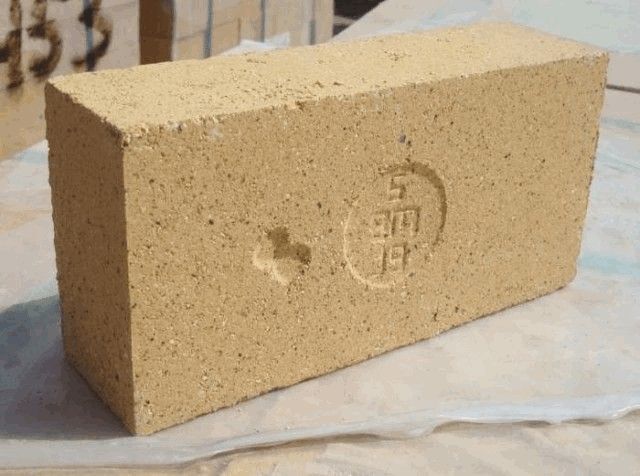
Kiln brick size, standard and its requirements
A separate document has not been developed for bricks for stoves; there is only GOST 8426-75, which stipulates the dimensions and shape of clay bricks for chimneys. According to this standard, two standard sizes of straight brick are installed:
- single – 250 x 120 x 65 mm;
- thickened – 250 x 120 x 88.
Advantages of products made from fireclay clay
Products containing fireclay clay are widely used in metallurgy. There are many products that resist prolonged exposure to heat and direct fire, but only fireclay products are considered universal.
The benefits include:
- withstands high temperatures - up to 1600°C;;
- fast heating and long heat retention;
- ease of operation, the ability to lay on any side;
- absence of emissions of harmful substances when temperatures rise - environmental friendliness;
- immunity to chemicals.
Fireclay is actively used in everyday life - it is used to design fire-resistant structures. Its main difference is the price, but the high cost is compensated by long durability.
Types of bricks according to manufacturing technology and materials used
The use of bricks for laying stoves largely depends on what material and technology the bricks were made from. The fact is that the use of solid, perfectly shaped bricks is not always advisable in laying stoves. A striking example of this is sand-lime brick.
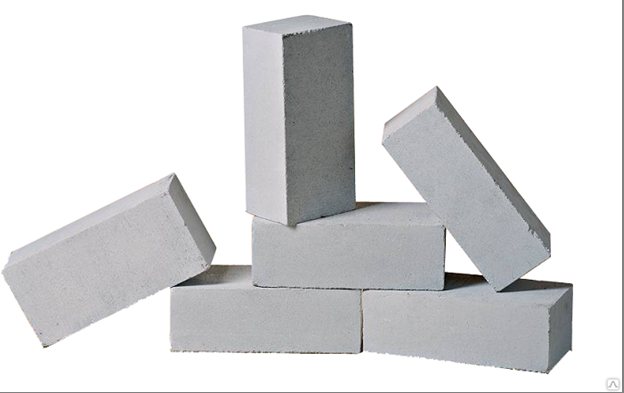
When choosing which brick is best for building a stove, sand-lime brick is clearly not the favorite. Everything is quite simple here - this material is made from a mixture of quartz sand and limestone. During production, the material goes through a process of cleaning, molding and drying. The resulting structure meets all the parameters of the wall material. But alas, it is not worth using it for folding stoves. The ideal shape of the edges and corners does not fit well with clay, and the structure turns out to be fragile. When temperature changes, silicate changes its structure and begins to delaminate. Literally a few cycles after cooling, the brick begins to intensively absorb moisture, and during the heating process, intense evaporation only intensifies the delamination process. Silicate does not have sufficient heat capacity, so when heated it will require a large amount of heat to warm up, and then it will cool very quickly. Another disadvantage of sand-lime brick is its hygroscopicity - it is not suitable for foundation construction, it very quickly begins to absorb moisture and lose its strength.
Hyperpressed brick
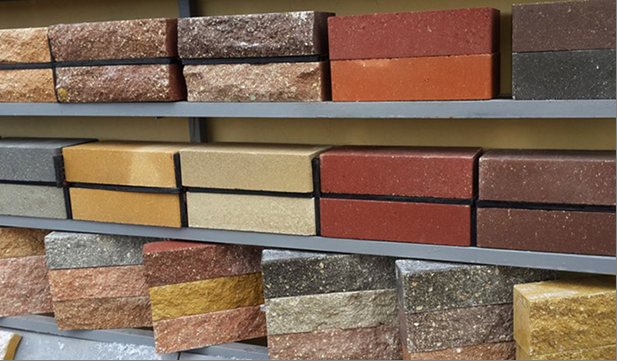
This type of wall material is distinguished by its strength and durability. The basis for production is the fine fraction of rock screenings - marble, shell rock, limestone or dolomite. The binder is Portland cement. The process of molding and drying produces a material with high density and the ability to withstand up to 100-150 freeze-thaw cycles. The blocks are distinguished by the fact that during the molding process, edges with almost any texture can be obtained. But this material also finds limited use in the construction of furnaces. There are several factors precluding its use:
- Hyper-pressed brick is not used for laying stoves, first of all, because it is absolutely not a plastic material. When heated, it cannot withstand the heat load and simply bursts. And when lining the stove, it does not withstand shrinkage and cracks in the masonry;
- Just like silicate, this material loses its properties when heated - limestone begins to release carbon dioxide, and when cooled, it actively absorbs moisture;
- Bricks of this type are mainly produced in the M250 or M 300 grade; they are durable but too heavy, so they are absolutely not suitable for laying a chimney or firebox.
True, hyperpressed brick can be successfully used to decorate garden hearths and barbecue ovens. Here he will serve for many years.
Ceramic brick
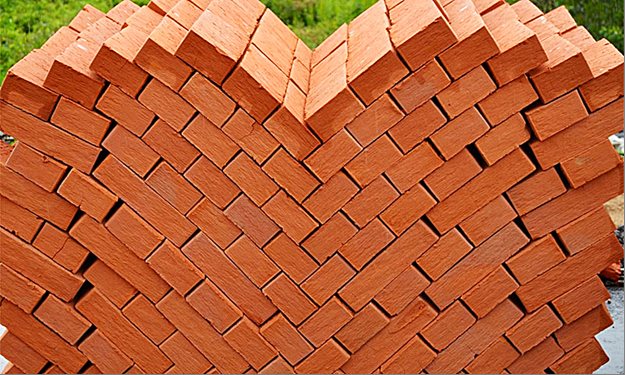
The main raw material for the production of ceramic bricks is clay. As with masonry mortar, not all types of natural clay are used for brick molding. Most often, fired ceramic bricks are used for laying the base, outer walls of the firebox, chimney, and decoration. For all structures, exclusively solid bricks of the M-150, M-200, M-300 brands are used. Solid blocks must not only have correct geometric shapes and uniform color; when broken, the inner part must be uniform in both color and texture, and the outer part without cracks. As for frost resistance, the blocks must withstand at least 35 freeze-thaw cycles.
The only place where it is not recommended to use red solid brick is at the ends of chimneys. In any case, without external masonry made of clinker or facing bricks.
When considering which brick is best for masonry, it is necessary to remember that red ceramic bricks differ in manufacturing technology, which determines its quality characteristics. Raw brick, made by atmospheric drying, is unsuitable for kiln work. It cannot withstand temperature changes, has a heterogeneous structure and does not have the necessary strength qualities.
Which brick is best to use for a stove: tips and warnings
To prevent the stove structure from falling apart on the first day and creating a fire with its work, you need to take the choice of bricks for it seriously.
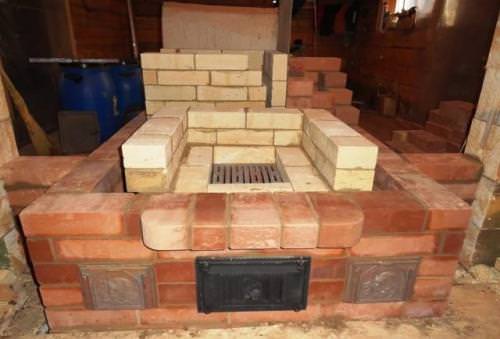
For masonry you need to use oven bricks, which have the following properties:
- Durability;
- The absence of voids inside;
- Fire resistance;
- High quality.
The difference between stove brick and simple heat-resistant brick is the ability of the former to withstand high temperatures (over 1000 degrees). Also, such a stone will not crack when it cools suddenly.
There are four main types of kiln bricks:
- Fireclay - ideal for a stove or fireplace, as it can withstand temperatures within 1600 degrees;
- Quartz - made from clay and sand;
- Red fireproof - cheaper than chamotte, holds heat well and then releases it for a long time;
- Alumina is a fireproof material that is not afraid of sudden temperature changes.
It is also worth remembering which bricks cannot be used to create stoves:
- Decorative - it can only be used when lining a fireclay stove, in other cases it simply will not withstand the heat;
- Hyper-pressed - during firing it completely loses all liquid, which is why voids appear inside the material, which negatively affect its quality;
- Construction ceramic - suitable for stoves with low heating intensity, not suitable for fireboxes or chimneys;
- Previously used, old or burnt out - such a brick “will not last long”;
- Silicate - when sand-lime brick is heated, harmful substances are released into the air, and after several heatings the masonry may begin to crack, since this material is not able to withstand high temperatures for a long time.
When making a stove, you cannot save on materials, because this will certainly affect its quality. It is best to listen to the advice of experts who will help you choose the “right” stone.
Rejection and selection
Bricks that are clearly unsuitable for the kiln are discarded. signs, see figure:
- With dimensions that do not correspond to the module.
- Apparently cracked, with strong burrs and burrs from cutting, with foreign inclusions - left pos.
- Heavily burned, very dark, swollen, warped, with spots appearing on the edges - average position.
- Having traces of gas release during firing in the form of rounded shells (cavities) with a smooth inner surface, right pos.
Defective stove bricks
Note: for fireclay bricks, it is permissible to have up to 4 shells per brick, but no more than 1 per face, see fig.
Types of bricks
Ceramic bricks are sorted as follows, see next. rice:
The first grade (on the left in the figure) is moderately annealed brick with sufficient density, quantity and pore size. The surfaces are smooth, the color is bright, saturated, from pure red to slightly yellowish. The sound when tapped with a 50-gram hammer is metallic ringing. Cut marks – no burrs; the edges are not crumbling. Iridescent spots or a continuous film are often visible on the edges (this is the surest sign).

The second grade (in the center) is slightly under-burnt. Frost resistance is weak, porosity is increased, heat capacity is less than that of the 1st grade. Signs: a larger number of tons (up to 420 pieces versus 320-340 for the 1st), unsaturated color (pale brick). The sound when tapped is clear and short, but somewhat muffled. Shallow nicks from the cut and some chipping of the ribs are acceptable. There is never a rainbow film; if it is, then from polymer plasticizers; such bricks are discarded.
The third grade (on the right in the figure) is moderately burnt. It is dense (240-290 pieces per ton), but has little porosity and conducts heat too well. Poorly frost-resistant, but suitable for foundations. It is very strong in compression, but does not hold other loads well. Signs: dark deep to brown color. It rings when tapped, but the cut is jagged and the ribs are often crumbled.
Note: burnt bricks are often sold under the general name “iron ore.” But, as we see, in a furnace, iron ore differs from iron ore.
About the rejection of fireclay
The surest way to reject fireclay bricks is to drop them from a height of about 1 m onto the stone floor. The good one breaks up into large fragments; bad - crumbles into a bunch of small ones. In production, fireclay is sometimes checked this way, selectively several pieces from a batch. Then the merchant will not allow anyone interested in selling his goods. In this case, you should be guided by the following algorithm:
- If you run your fingers across the ribs, the brick does not crumble or become dusty - it is suitable for further inspection.
- The ringing sound when tapped is quite long - 1st grade, suitable for any firebox, incl. furnaces with intense thermal conditions: bell furnaces, Kuznetsov furnaces.
- The sound is clear, short, abrupt - 2nd grade, suitable for other fireboxes.
- The sound is dull - marriage.
Production of facing bricks for fireplaces and their marking
The production technology of facing bricks for fireplaces and stoves has significant differences from the production of conventional building bricks. High-quality surfaces of the spoon and butt edges are its distinctive feature. They are not only smooth, but also textured or even specially aged. Many types have chamfers on the edges, thanks to which accurate jointing is possible. The facing never has cracks, lime inclusions, or chips.
Its color is even over the entire surface. Dimensions are more accurate than regular, construction or used for building furnaces. According to GOST, the deviation from the standard size should not exceed 4 millimeters in length and 3 millimeters in width. The thickness difference is plus 3 and minus 2 mm. As for straightness, the deviation is no more than 2 mm. The color scheme, as mentioned earlier, can have a variety of shades: from natural light yellow to dark blue and even black.

Textured brick
The production of facing bricks (both for stoves and fireplaces), like any other production, is being improved over time. So, in recent years this production has begun to take on other forms. Instead of forming a ribbon from clay, cutting it into bricks, and then firing it, dry production has become popular, and even from construction waste. In the old method, a moistened mass of sand and clay is fired in a kiln. But the time of stoves is irrevocably passing. So, for the dry method you only need a press. All necessary components are crushed in a crusher, mixed and pressed. This method is called superpressing. Moreover, in order to form bricks there is no need to press each of them or even a batch. Everything happens in a continuous cycle by feeding the starting products into a hopper connected to a screw press. The press creates the necessary pressure and temperature needed to sinter the components. When the mass comes out of their press, the mass (if it can be called mass) is cut into pieces of the required size. And then, the finished bricks cool in the air and acquire the declared depravity.
Related article: How bronze wallpaper is used in the interior
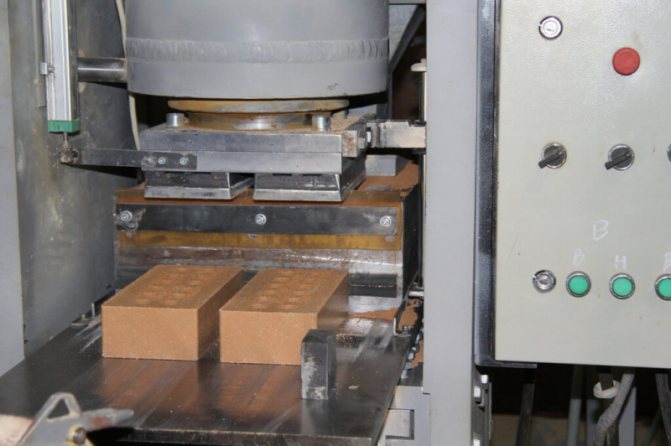
Brick production by pressing method
In the production of such facing material, metal production waste, slag from the furnace and much more can be used, what was previously considered garbage and thrown into a landfill. However, this does not in any way affect the quality of the facing brick. The consumer is usually not at all interested in what material it is made of. Especially if the brick is painted and the surface is embossed. Of course, such a product cannot have a natural color and synthetic dyes are used for coloring. But the price of this one is much lower than ceramic. The price of a brick for the construction of a furnace (kiln) is approximately three times lower than that of a refractory brick (fireclay). Facing, produced using old technology (firing in a kiln), is approximately twice as expensive. And using new technology (without firing in a kiln) it is sold at the price of fireclay. That's what the market is for, so that there is choice. And the choice is only up to the consumer.
What is the best way to finish?
If the stove has an independent meaning as part of the interior design, then it is best to use plastic-molded facing bricks to decorate it. It is almost always 2nd grade; this is exactly what is needed for the stove shell. When building a new furnace, the facing bricks are simply laid on the outside. Then the finishing happens by itself, and 3 birds with one stone are killed at once: the stove breathes deeply, takes on the appearance, as long as the seams are neatly cut, and comes out durable, because All seams are tied properly.
If you are covering an old stove, then you don’t have to think about bandaging the seams of the masonry with the lining, if only because the old ones have dried out. But the “thermal kicks” will eventually do their job and the lining will begin to peel off. Previously, in such cases, the stove was first lined with unglazed tiles on lime mortar, and on top of it - with bricks on the same mortar. The tiles played the role of a kind of damper. Now you can do it easier and cheaper: mix the masonry mortar of the cladding using the same aluminous cements.
What to cut with?
If you need to cut brick during the installation of the stove, it is best to use industrial stone-cutting machines . But since such a task is impossible at home, you can resort to an ordinary grinder . Cutting, abrasive or diamond discs are suitable for the job (the latter will last longer).
Before working with stone, you should make markings with a pencil. There are two ways to cut brick: dry and wet. When working with dry material, you need to be prepared for a lot of dust and stock up on a respirator and safety glasses in advance.
A cleaner process for cutting stone occurs if you first soak the building material in cold water for half an hour. The brick will become softer, more pliable and will not be bothered by dust.

Work requirements
If you decide to cladding the fireplace yourself, it is best to first familiarize yourself in detail with all the characteristics and requirements for this process. This will allow you to avoid the most common mistakes, save your effort, time and money.
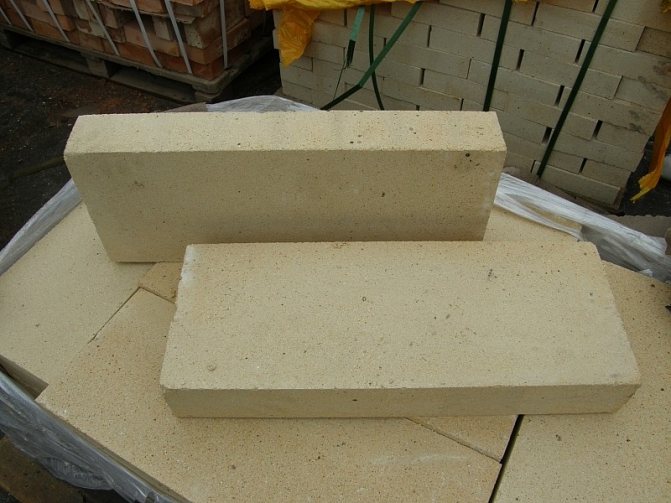
Depending on the type of work performed, choose fireclay slabs of a certain thickness for lining furnaces or insulating surfaces. Before purchasing, pay attention to the composition of the product; it should be as simple and safe as possible.
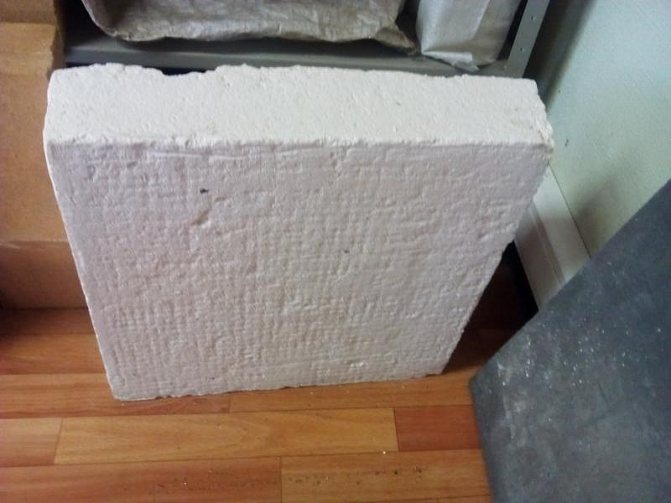
For better adhesion to the surface of the fireplace portal, you will need a high-quality adhesive base. Give preference only to glue with a high level of heat resistance and the ability to withstand temperatures up to 1000 degrees.
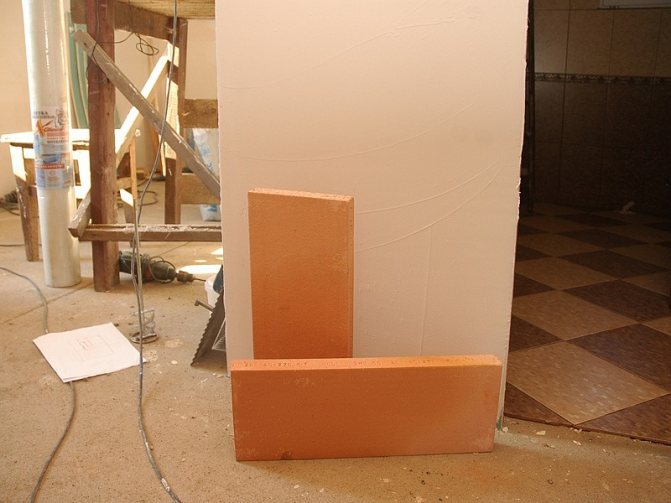
Determine for yourself the optimal sizes of fireclay slabs. You should not choose very large ones, as chips and cracks will soon begin to form on them. Also, don't buy very small tiles. This coating has a low level of efficiency, does not retain and accumulate heat well, and causes a number of certain difficulties in caring for the surface.

All seams between the plates are well rubbed, excess mortar is removed. There should be no gaps between the tiles, and all seams should have approximately the same thickness.
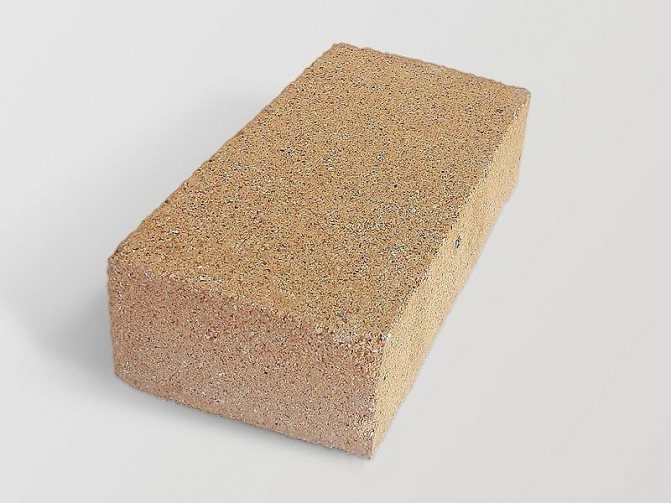
If you want to decorate the fireclay surface of a fireplace or stove, you need to properly prepare the surface. To do this, it is leveled, cleaned, and dust and other contaminants that can impair the adhesion of the cladding are removed.
Choose only environmentally friendly, durable and fire-resistant cladding. Since fireclay slabs are quite heavy, the total weight of a brick kiln with such thermal insulation will increase significantly. This means that the flooring in the room almost certainly needs to be strengthened. It is important that the heating structure was initially built on an additional and separate foundation!
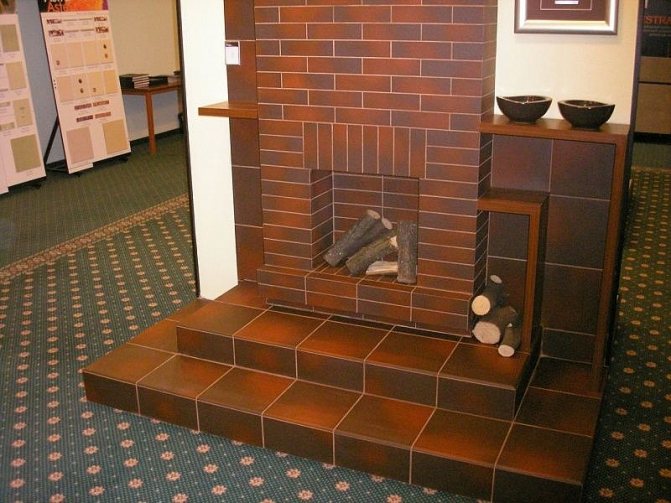
If you install and cover a stove in a wooden house, using this material you can not only cover the fireplace portal, but also insulate the floor surface and walls located near such a heating structure.
Next, you can watch a video that talks about several possible options for lining fireplaces and stoves with fireclay slabs with your own hands at home:
Reviews from stove makers
Reviews and advice from experts relate to the technical characteristics of the material. If the stove is built according to all the rules and high-quality brick is used, then it will not create problems even in the distant future.
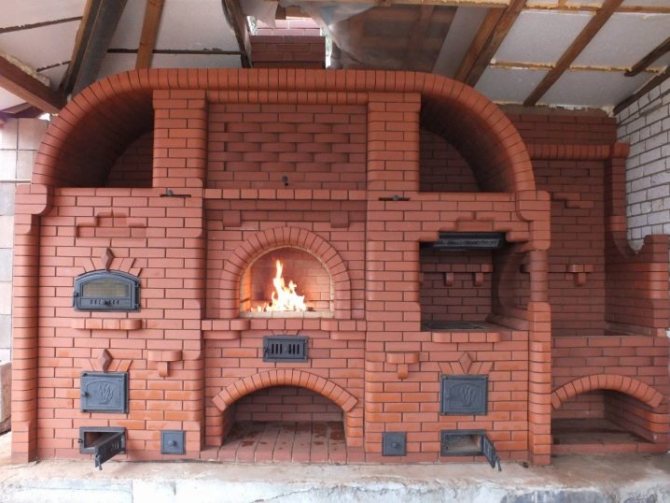
Temperature limit
Stove makers advise choosing heat-resistant materials for stoves and fireplaces, regardless of the place of use:
- for the installation of a firebox - 1800 degrees;
- for interior walls – 700-1200 degrees;
- for chimneys and pipes – 700 degrees;
- for cladding – 700 degrees.

Thermal conductivity
Solid stove brick has a high density and thermal conductivity, but each type has its own indicators under normal conditions (15-25 degrees):
- magnesite – 4.7-5.1 W/ (m*deg) at a density of 2600-3200 kg/m³;
- carborundum – 11-18 W/ (m*deg) at a density of 1000-1300 kg/m³;
- fireclay – 0.85 W/ (m* deg) at a density of 1850 kg/m³.

Experts advise choosing low thermal conductivity - this will make it possible to protect materials adjacent to the structure from high heat. Fireclay brick is capable of retaining heat, but at the same time its thermal conductivity is quite low. This material has the most positive reviews.
Resistance to aggressive environments
Based on reviews from stove makers, we can conclude that fireclay bricks react poorly to an acidic environment, so it should not be used where there is a risk of contact with acid. Quartz brick suffers from alkaline reactions - it is not used in places where it is planned to work with lime.
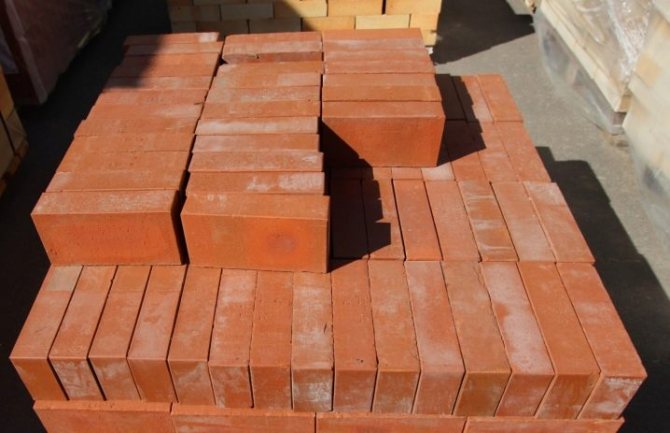
Water absorption
According to experts, the water-drawing effect of stove bricks is quite large. During firing, pores are formed in the stone that can accept moisture from the external environment. If a building material is left outdoors, in snow or rain, it can gain 30% of its original weight. Therefore, you should pay attention to the place where bricks are stored and exclude their contact with a damp environment.
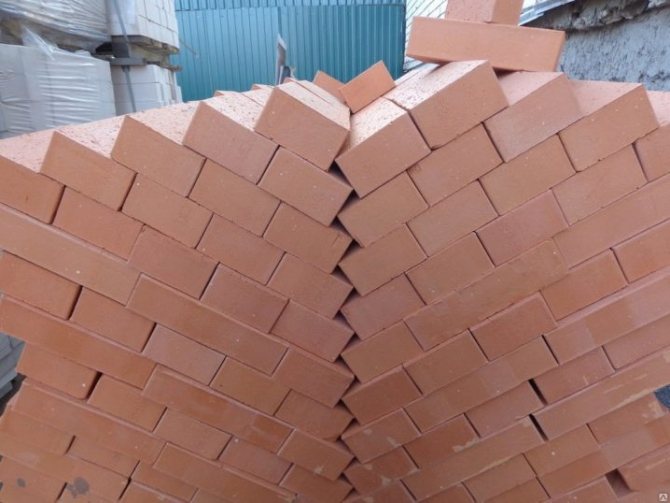
Information about stove bricks will help you avoid making mistakes in choosing a building material. But even with theoretical literacy and complete study of the topic, it is better to entrust the construction of the furnace itself to a professional. Mistakes in such a matter can cost the health and lives of household members.
Frequently Asked Questions About Fireclay Fire Bricks
What are the sizes of fireclay bricks?
Fireclay bricks come in different sizes. They depend on the characteristics of the products, area of application, brand, etc. However, there are main types of dimensions:
- 250×120×65 mm;
- 250×120×88 mm;
- 250×120×138 mm.
Each brand of brick may have different sizes. You can find out more by selecting the desired type or calling the number.
Weight of fireclay bricks?
The weight of fireclay bricks depends on its size. For a standard size product, this figure varies from 3.4 to 4 kg. For example, brick ShB-5 weighs 3400 grams with dimensions 230x114x65 mm, and ShB-8 - 4 kg with dimensions 250x124x65 mm.
Characteristics of fireclay bricks?
Each brand of fireclay refractories has its own properties and parameters. Below are general indicators; more details about each product can be found in its corresponding section.
| Index | Meaning |
| Aluminum oxide in composition, % | 28-33 |
| Fire resistance of brick, °C | 1650-1730 |
| Compression resistance, N/mm² | 13-23 |
| Change in dimensions when heated to 1400 °C, % | 0,3-0,5 |
| Proportion of voids, % | 23-30 |
| Softening upon heating, °C | 1300-1320 |
What brands of fireclay bricks are there?
The most popular brands of fireclay bricks are ShA and ShB. This is a standard building brick. There are also products of the following brands: Ш1, Ш2, Ш3; ShK, ShVG; ShBM, SHAM, ShN; broadband; SHL, SLT; SHAK; ShSP; ShChU; SHV; ShS; ShSP; Shtsu; BSHI; BN-30-CB. Moreover, each brand of brick has its own purpose.
Which fireclay brick is better?
Most types of fireclay bricks are made for their specific purposes. For example, ShKU brick is intended for laying chimneys or metallurgical furnaces, and ShSP is for working with a steel-pouring ladle.
Therefore, it is impossible to say which fireclay brick is better. But you can compare ShA and ShB, since both types are construction. If you want to focus on the strength of the future structure, then it is better to choose SHA. If it is important not to load the foundation, then ShB.
SHA fireclay brick dimensions?
SHA bricks come in three types: straight, one-and-a-half, three-quarter. Each type has its own dimensions:
- for direct: 230×65×65, 230×85×65, 230×114×100;
- for one and a half: 230×172×75, 230×172×65;
- for three-quarter: 172×114×75, 172×114×65.
What are the standards for fireclay bricks?
Each group of fireclay refractories has its own GOSTs and specifications. More details can be found in the relevant sections.
How to age fireclay brick?
To age fireclay bricks, you need to slightly damage its surface from the outside. This is done with a grinder, coarse sandpaper, a hammer drill, a chisel, and a blade. Depending on the scale of work and the desired result.
The dimensions of fireclay bricks for a furnace are determined by the desired brand of product. For household stoves and baths, the ShB brand is most often used. Standard sizes can be 250×120×65, 250×120×88, 250×120×138 mm.
The difference between SHA and ShB bricks?
Refractories ША and ШБ differ from each other in the following characteristics: fire resistance, size, oxide content, density, strength, application. More information about the differences between ShA and ShB can be found here.
Is fireclay brick harmful?
Fireclay bricks are made from natural materials, so they are not dangerous and do not emit harmful substances.
Thermal conductivity of fireclay bricks?
The thermal conductivity of fireclay bricks at a density of 1850 kg/m³ is 0.85 W/mS. At high temperatures it can reach 0.9–1.44 W/mC.
What are lightweight bricks?
Lightweight brick is available in two grades - ShL and ShLT. They differ slightly in composition and technical characteristics from each other. Shlt also differs in its talc content.
What is the shape of lightweight fire brick?
For ease of construction, lightweight refractory bricks are manufactured in a variety of shapes. The most common of them are: straight, wedge-shaped, trapezoidal, shaped.
Features of clinker
Brick made using clinker technology from highly melting grades of clay has great strength (more than M300) and frost resistance (more than F 100).
The specific features of clinker are indispensable when laying the base layer of the foundation and the internal chimney channel reaching the cap, provided that the cladding is decorated with a different material.
Making the main part of the stove out of clinker is an expensive and unjustified pleasure, especially since the structure will be massive and heavy.
If the owner plans to make a compact stove in a bathhouse, clinker brick will be an ideal material that will allow heating the space no worse than a thick-walled cast iron “potbelly stove.”
Features and advantages of brick chimneys
Each private house, which has one of the possible configurations of the heating structure, is equipped with a chimney. The role of the chimney is to remove the products of fuel combustion outside the house. Today, there are a large number of new solutions for arranging such a system. In any hardware store you can pick up any materials and tools in order to perform a high-quality installation of this structure.
Brick structures are still very popular and are distinguished by their reliability. The main advantages of such chimneys:
- variety of materials for installation;
- low installation cost;
- heat resistance. The brick pipe can withstand temperatures up to 1000 °C;
- aesthetics. Brick chimneys look very beautiful and can play the role of a decorative element of a building. Ceramic material is a popular material for decorating pipes.
- thermal conductivity. Such a chimney “controls” that heat circulates throughout the rooms and is not ventilated through the pipe.
How to avoid buying defective goods?
Refractory bricks are produced in accordance with GOST or technical specifications of enterprises.
Theoretically, defective products should not go on sale, although in practice different situations occur. Experienced craftsmen have their own methods for assessing quality. The most reliable, but not always acceptable, method is a unique method. You need to take a brick and drop it to the floor from a height of one meter onto a stone surface. If after the fall you get large pieces, it means the product is good. If a pile of small fragments forms, you should refrain from purchasing, although you will probably have to pay the cost of one brick.
The quality of brick products is clearly revealed when tapped. If the sound produced is quite clear and long-lasting, the product is good and corresponds to grade 1.
If, when tapped, the brick makes a clear, short sound, the product belongs to grade 2, which is also quite acceptable for most stoves.
If there is a dull sound, it is better to refrain from purchasing, because this is a sign of an obvious defect.
Purchasing refractory materials from manufacturers who specialize in this type of activity and have credibility with customers will avoid unpleasant surprises when laying stoves and their subsequent operation.
